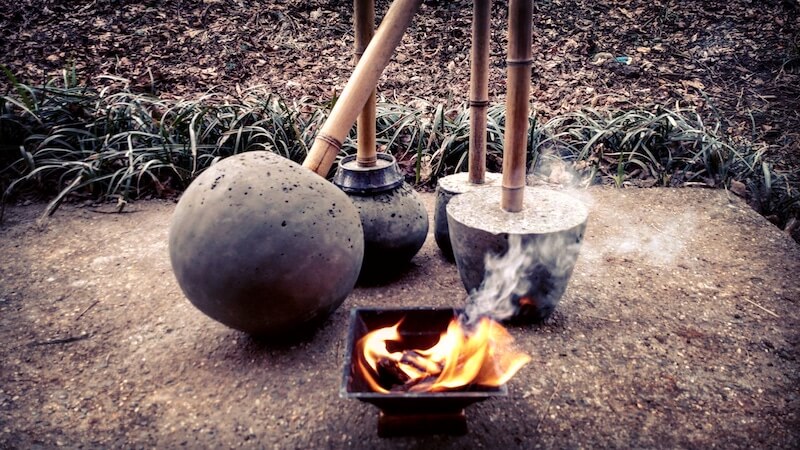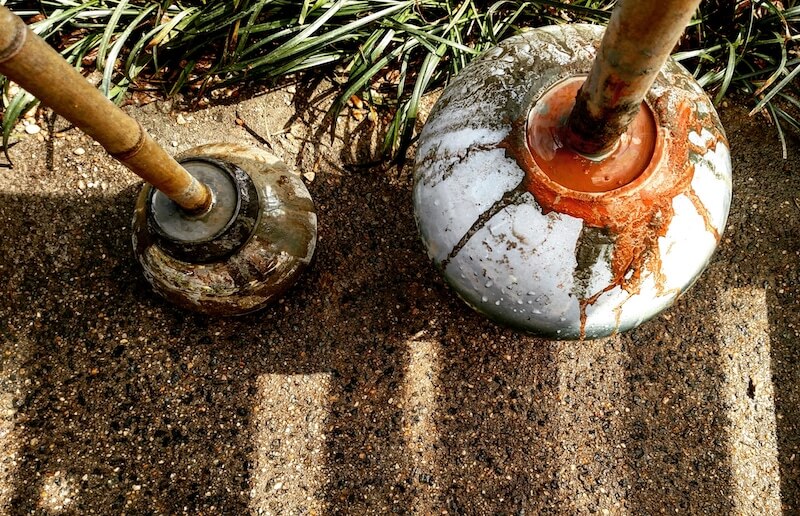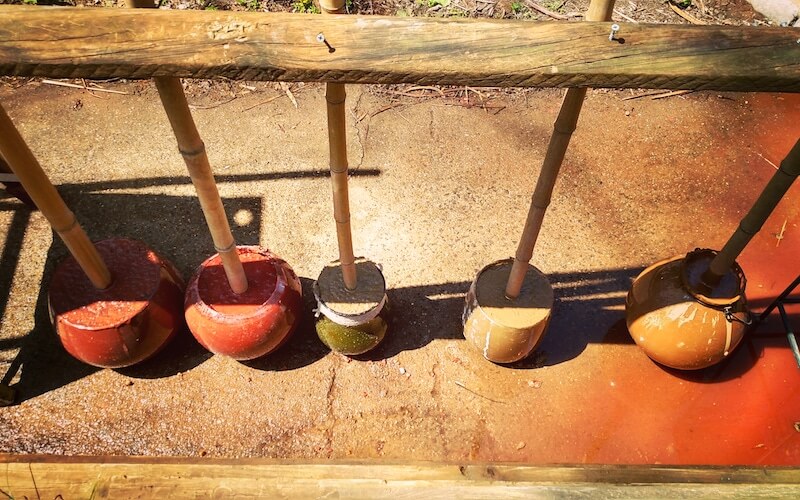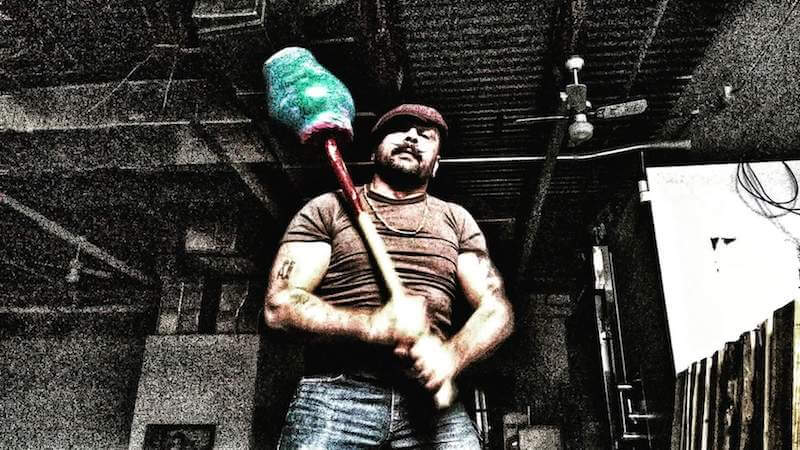William Calvani
I have a great pleasure to introduce you to William Calvani who answers questions sharing his thoughts and experience of adopting and training with the Gada (mace). In the same breath, I would like to add that William has become a master of making Gadas in the traditional style using concrete and bamboo and he has contributed photographs of one of his methods to the instruction page on this website.
What is your background before the Gada (mace)?
William Calvani:- Brazilian Jiujitsu, a popular form of grappling, is my drug of choice. Any other training that I do, including swinging the Gada is in support of that practice.
What sparked your interest in Gada (mace) swinging?
William Calvani:- I consider grappling a spiritual pursuit. When I came across Joseph S. Alter’s book “The Wrestler’s Body“, a book about Indian Akhara wrestling gyms, it provided context for that intuition. It also provided my first exposure to the Gada.

Can you explain why you like swinging a Gada?
William Calvani:- I adopted a minimalist bodyweight vyayam, or exercise routine, and began investigating what is described in ‘The Wrestler’s Body’ as:
“… a large round rock fixed to the end of a metre long bamboo staff which is lifted and swung for exercise. The gada is, then, clearly the mark of a wrestler’s prowess. … it resembles the churning stick used to make butter and buttermilk. By swinging the gada one might say that a wrestler is churning his body to increase his store of semen…”
Right up my alley, as they say.
When did you start swinging the Gada (mace)?
William Calvani:- I came across Jake Shannon’s release of Karl Gotch’s “Conditioning for Combat sports” which depicts Gotch, the famous catch wrestler swinging a Gada, and immediately set about mentally converting everything I saw into sticks and spheres.

Who did you learn from?
William Calvani:- My first Gada was a pipe with a 22lb head cast inside of a ball. I struggled with learning to swing it. I had a breakthrough in the woods in upstate New York when I just let it swing. Eventually, I discovered social media and began connecting with and observing people like yourself. Having no formal training in fitness, and being a self-styled ‘Lingonaut”, I have been developing a conceptual language according to my experience with the gada, so forgive any unusual, unfamiliar and imagistic terms.

What are the benefits of Gada training?
William Calvani:- In my opinion and experience the 10 to 2 swing has these benefits:
- Developing grip strength and grip intelligence by requiring one to handle a dynamic offset weight in various vectors over a given length of time and repetitions. By grip intelligence, I mean the ability to micro-adjust the amount of force in the grip through the movement which applies directly to grabbing and holding an opponent.
- Shoulder Health through traction in a full range of motion.
- Hip drive and amplification which works towards…
- Unifying the body to efficiently unfold complex movement
- Rhythm and timing: repetitive technical and orderly unfolding, a tonic to the CNS, a neurological routing for other techniques.

Can you give an outline of your Gada training?
William Calvani:- I train exclusively the 10 to 2 swing. The 360 is, in my opinion, a training swing on the way to the 10 to 2. I believe that the ancestral developers and practitioners of the Gada assessed and deemed this swing to be the most bang for the buck.
What is your preferred weight for day to day Gada training?
William Calvani:- I typically train in the 30-45lb range and training varies. I prefer high volume, say 5 sets of 50, but I include single-arm, speed variance, pauses in difficult to hold positions. I aim for smoothness, beauty, and a full connection between mind and body.

Can you describe the features of your favourite Gada?
William Calvani:- I prefer a shorter handle because of the faster turnover time, which to me feels like a more martial movement compared to the long slow swing.

How do you train beginners to swing a Gada?
William Calvani:- When I train people to swing, I have them move through a specific progression of movements from the technical pick up, to the gada behind the head in the “Bull Horns” position to the pullover and then I slow them way down.
There is something invigorating and empowering about being able to swing and many will overdo it. I ask them to be disciplined with a particular laddering scheme to adapt tissue to the unusual movement. When they reach 100 swings without pause and display all of the hallmarks of a good swing then I declare them free of my tyranny. Salute!
Contact William Calvani



